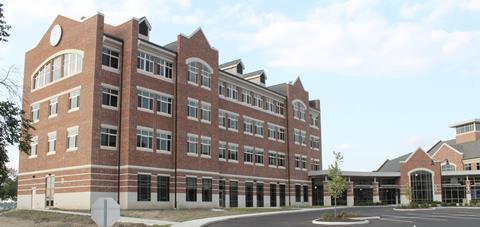GE Aerospace plans to invest up to $20 million to add a new test cell and equipment at its Electrical Power Integrated Systems Center (EPISCenter) in Ohio, U.S., to meet increased demand for hybrid electric aircraft engine component testing in coming years.

GE Aerospace announced May 17 plans to invest up to $20 million to add a new test cell and equipment at the Electrical Power Integrated Systems Center (EPISCenter) in Dayton, Ohio, to meet increased demand for hybrid electric aircraft engine component testing in coming years.
NASA recently selected GE Aerospace to develop an integrated, megawatt (MW)-class hybrid electric propulsion system as part of the Electrified Powertrain Flight Demonstration (EPFD) program. Plans for EPFD call for ground and flight tests of the hybrid electric system this decade, in collaboration with Boeing, using a modified Saab 340B aircraft and GE’s CT7 engines. NASA also previously awarded GE Aerospace a contract for the Turbofan Engine Power Extraction Demonstration under the Hybrid Thermally Efficient Core (HyTEC) project.
The EPISCenter facility improvements will support testing for GE Aerospace’s expansive development of next-generation propulsion technologies in which electrification is key.
“The future of flight is more electric. GE Aerospace has been developing the building blocks for hybrid electric engine technologies for years, combining our world-class propulsion engineering, electrical power generation, and electrical power system management experience. Our new investment in EPISCenter to support hybrid electric engine testing affirms our commitment to the development of game-changing technologies for the aviation industry,” said Mohamed Ali, vice president of engineering for GE Aerospace.
GE Aerospace has collaborated with NASA for decades on development of new aviation technologies.
“NASA has a long history of supporting and advancing aviation research, and we’re currently working together with industry to usher in the next commercial air travel revolution,” said Tim McCartney, director of aeronautics research at NASA’s Glenn Research Center. “Single-aisle aircraft are the biggest contributors to aviation emissions. That’s why NASA Aeronautics is partnering with U.S. industry to enable next generation single-aisle aircraft with at least 25 percent more fuel efficiency by the 2030s.”
The 138,000-square-foot EPISCenter was opened in 2013 on the University of Dayton campus, representing a $53 million investment at the time to help advance the development of more electric aircraft. Since then, another $26 million has been invested in facilities and equipment. The additional investment announced today brings total planned capital spending on the EPISCenter to nearly $100 million since opening, building on the site’s existing research and testing efforts of end-to-end electrical power starter and generation, conversion, distribution, and load technologies for military and civil aviation applications.
“As we approach the 10th anniversary of opening EPISCenter, the growth has already outpaced our original expectations for electrical systems development and testing,” said Joe Krisciunas, president and general manager of electrical power systems for GE Aerospace.
Along with the opening of EPISCenter, GE Aerospace has achieved several technical milestones over the last decade for development of a hybrid electric propulsion system. In 2022, GE Aerospace completed the world’s first test of a MW-class and multi-kilovolt (kV) hybrid electric propulsion system in altitude conditions up to 45,000 feet that simulate single-aisle commercial flight. This test took place at NASA’s Electric Aircraft Testbed. Leading up to last year’s milestone, GE Aerospace had been maturing hybrid electric propulsion systems through a series of increasingly complex steps including a 2016 ground test.
Currently, GE Aerospace is developing next-generation technologies as part of the CFM RISE* (Revolutionary Innovation for Sustainable Engines) program, unveiled in June 2021. The RISE program encompasses a suite of new aviation engine technology development including hybrid electric capability for more than 20% improved fuel efficiency and 20% fewer CO2 emissions compared to today’s engines.
In another program with Sikorsky called Hybrid-Electric Demonstrator (HEX), GE Aerospace is offering a CT7 turboshaft engine combined with a 1 MW-class generator and associated power electronics. This fully autonomous hybrid-electric vertical-take-off-and-landing prototype will be used as a testbed to evaluate new aircraft design, propulsion systems and control architectures for utility missions for military and commercial applications.
Hybrid electric propulsion technologies can help improve engine performance, reducing fuel usage and emissions. More information on how GE Aerospace is innovating to help the aviation industry reach its target of net zero CO2 emissions by 2050, including a link to GE’s 2021 Sustainability Report, is available at www.GEAerospace.com/Future-of-Flight.
* RISE (Revolutionary Innovation for Sustainable Engines) is a trademark of CFM International, a 50/50 joint company between GE and Safran Aircraft Engines.


























